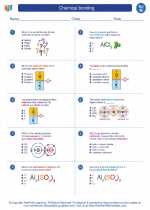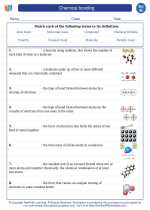Single Replacement Reaction
A single replacement reaction is a type of chemical reaction where an element reacts with a compound and displaces another element from it. This occurs when a more reactive element replaces a less reactive one in a compound. The general form of a single replacement reaction can be represented as:
A + BC → AC + B
Key Concepts
- Reactants: The elements or compounds that react with each other.
- Product: The new compounds formed as a result of the reaction.
- Activity Series: A list of elements arranged in order of their reactivity, which helps predict whether a single replacement reaction will occur.
- Reactivity: The tendency of an element to undergo a chemical reaction.
Example
One common example of a single replacement reaction is the reaction between a metal and an acid. For instance, when zinc (Zn) is added to hydrochloric acid (HCl), the following reaction takes place:
Zn + 2HCl → ZnCl2 + H2
Study Guide
To understand single replacement reactions, it is important to grasp the concept of reactivity and the activity series of elements. Here are some key points to consider when studying single replacement reactions:
- Memorize the activity series of elements, which will help in predicting the outcome of single replacement reactions.
- Understand the reactivity of different elements and how it influences their ability to displace other elements in compounds.
- Practice balancing chemical equations to represent single replacement reactions accurately.
- Identify common examples of single replacement reactions in daily life and in industrial processes.
- Learn the use of single replacement reactions in various applications, such as in the extraction of metals from their ores.
By understanding the principles of single replacement reactions and practicing with examples, you can master this fundamental concept in chemistry.
[Single Replacement Reaction] Related Worksheets and Study Guides:
.◂Science Worksheets and Study Guides Eighth Grade. Chemical bonding

 Worksheet/Answer key
Worksheet/Answer key
 Worksheet/Answer key
Worksheet/Answer key
 Worksheet/Answer key
Worksheet/Answer key
 Vocabulary/Answer key
Vocabulary/Answer key
